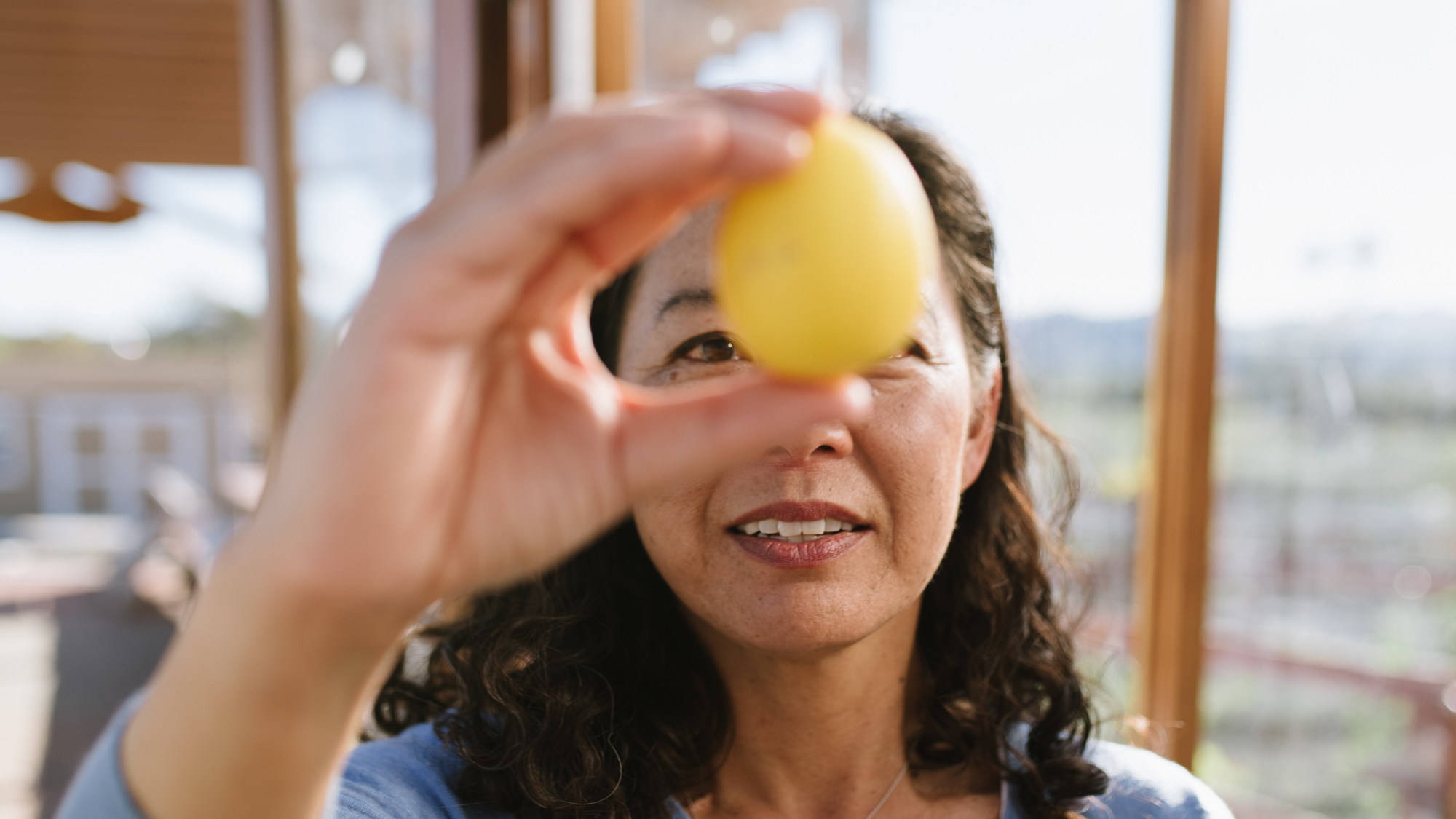Small Bites: How Naomi Hansen (B’95) is Battling Food Insecurity Through Backyard Gardens
As Naomi Hansen (B’95) began to climb the career ladder at Dole Packaged Foods, she became increasingly disenchanted. She had been with the company for a few years, and had moved up through the marketing and management ranks to become head of innovation at Dole, which to her, meant thinking critically about the future of food: how will the food system adapt to and address water shortages, nutrition, and food insecurity? At trade shows, however, Hansen saw a different definition of “innovation” on display.
“A lot of it was people coming up with the latest niche-y snack treat and thinking about how quickly they could exit and sell it to Kraft.” Hansen kept coming back to a lesson of her Georgetown education: “One thing I took away from Georgetown was the real emphasis on service, and I always circled back to that and would ask myself, ‘what are we really contributing?’”
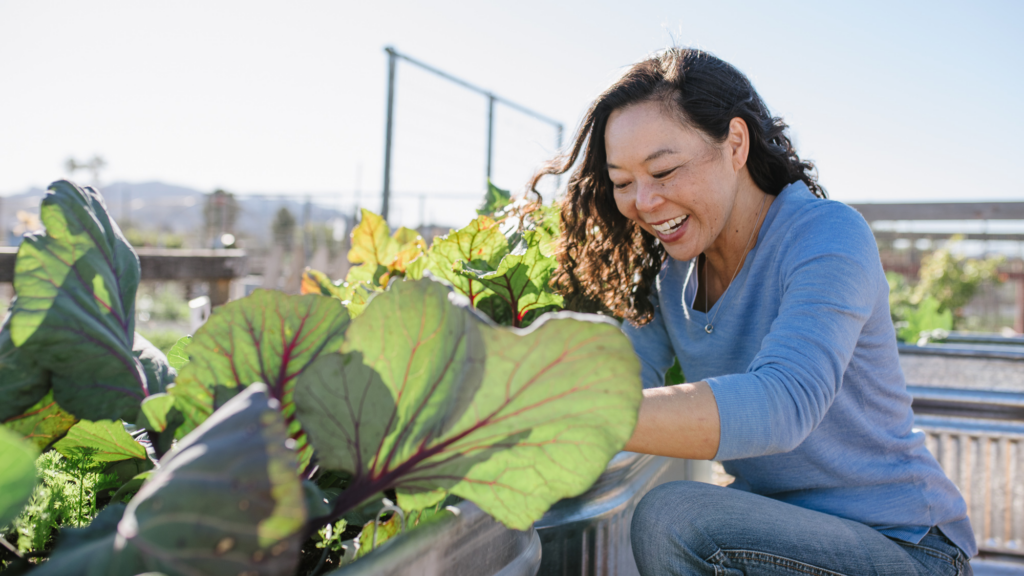
When Dole reshuffled during the pandemic, Naomi Hansen found herself asking bigger questions about her next career step. “Is it meaningful,” she thought, “for me to go back and put more packaged, processed goods on the shelf?”
When Dole reshuffled during the pandemic, she found herself asking bigger questions about her next career step. “Is it meaningful,” she thought, “for me to go back and put more packaged, processed goods on the shelf?” So Hansen decided to step back from the corporate world and explore other areas of the food industry. “One of the things I felt strongly about—and still feel strongly about—is the importance of local food as part of the solution to food insecurity,” she says.
Her first move was to found a consultancy aimed at supporting companies and individuals trying to create change in the food system. That consultancy work led her to a marketing position with Planetary CARE, a regenerative agriculture startup, and later Fresh Food Connect, a startup that focuses on addressing food insecurity by making it possible for frontline hunger relief organizations to access homegrown food from local gardeners. Her job as director of marketing: tell the story of the company and help it grow to more and more gardeners and partners across the United States.
Gardeners like Heather and Terrance Grady. Their backyard in Denver, Colorado, used to be a parking lot. After years of reimagining it, leveling it, and prepping it, they created a more natural space in their urban area—a true backyard where they had hoped to build six raised garden beds to grow their own food in the heart of the city. It was a smart plan for the two-person household: By making the most of their backyard farm, they would save water that others might use to keep a pristine lawn. It also was important to them to know exactly where their food was coming from—about 200 feet beyond their back door. When the pandemic hit in 2020, their garden project took on new proportions. The six beds turned to 13, because what better way to spend their days at home than growing tomatoes and cucumbers?
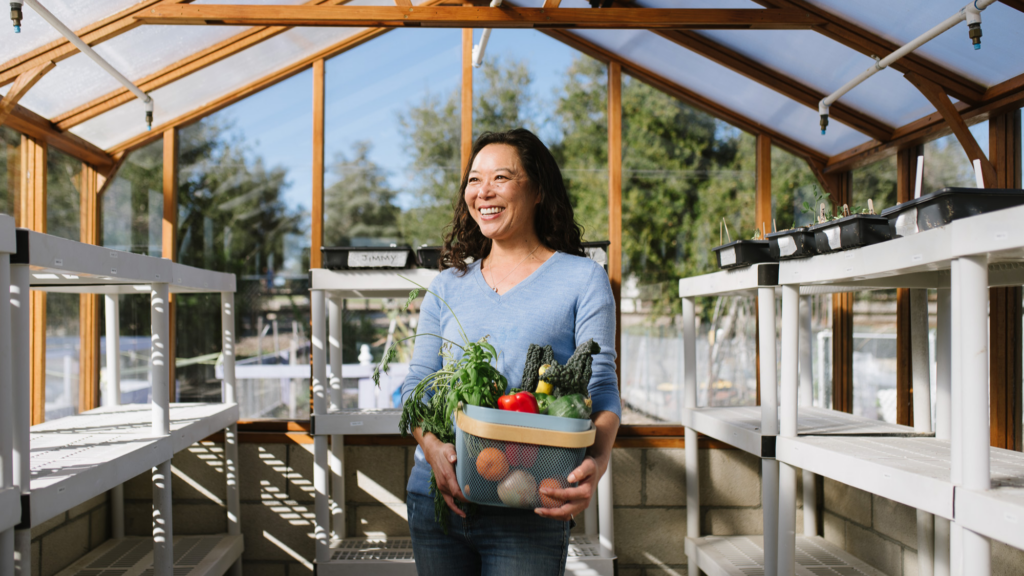
As director of marketing at Fresh Food Connect, Hansen’s job is to tell the story of the company and help it grow to more gardeners and partners across the United States.
A problem with their plan, however, soon sprouted: two people (and frankly, all their friends, family, and neighbors) couldn’t possibly consume all the food that was bursting from the beds. So Heather began to dig around to find the best places to send her backyard leftovers. She quickly found one organization, but they were particular in what they would accept, and zucchini was high on the list. But Heather had a lot more than zucchini to put to good use.
Eventually Heather found Denver Food Rescue and read about its partnership with Fresh Food Connect. Suddenly the Grady surplus had a home, and Heather began to grow produce she never had before (tomatillos for example), because she knew they were important to the community that was consuming them. All Heather had to do was harvest her food, log on, schedule a pick-up, leave her extra produce on the porch, and know that she was helping to feed her community simply by doing something she had come to love.
Finding people like Heather and Terrance Grady isn’t very difficult—seed sales soared when the pandemic hit and gardeners, from novice to expert, turned to their backyards and community gardens amid food-shortage fears. “The Gradys just started out with a small garden, trying to see what they could grow,” says Hansen. “Knowing they had a place to put all the extra produce was a really motivating factor for them to grow even more. And they’ve converted their whole backyard into a giant garden.”
The Gradys eat a small fraction of what they produce, and it allows them to grow additional crops with intention. “I think the beautiful thing is they’re moving more toward growing culturally relevant foods for their community,” says Hansen. And that, ultimately, is what makes Fresh Food Connect different from other organizations working to address hunger and food insecurity: creating deeper connections within communities.
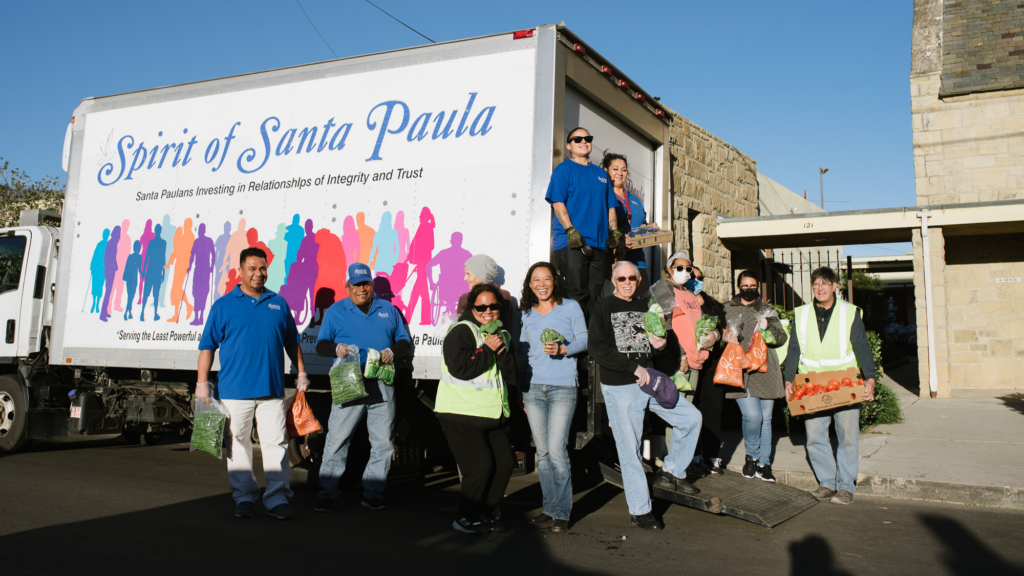
Because Fresh Food Connect is web-based and scalable, the nonprofit can create local food systems—between gardeners and food rescues—and replicate that model throughout the country.
While local gardeners like the Gradys are ready and willing to help, the picture gets more complicated because local hunger relief providers (often run by just a handful of community volunteers) don’t have the capacity to coordinate donations from many individual gardeners. It’s also difficult for food pantries to gain access to fresh, local produce. Hansen works to make the impact, value, and simplicity of the app clear to everyone involved.
“We’re working with on-the-ground people who have a small office and do distribution maybe once or twice a week. We’re also working with backyard gardeners, who might have a pint of tomatoes, or 10 cucumbers,” says Hansen. On an individual level, 10 cucumbers may not make a dent in a community’s food problem— and may not be worth the effort of a food rescue to accept. “But when you apply technology, it becomes scalable and easier to coordinate 10, 20, 50 gardeners from your neighborhood to bring excess food to their local food rescue, and you can make a larger impact.”
Suddenly those 10 cucumbers have grown to 100, 200, or 500 cukes—and those numbers make a big difference to those organizations and the people using their services. “That’s the beauty of it,” says Hansen. “We’re creating local food systems, but because we’re web-based, it’s scalable, and we can distribute that process throughout the country.”
Fresh Food Connect was in the works before COVID hit, as they developed and implemented the app, but the app’s launch came just in time for the pandemic and rising food needs. The organization—which measures time in gardening seasons—has just wrapped its second season, and in that small amount of time, Fresh Food Connect has branched beyond their headquarters in Denver to reach 28 states. In 2022 alone, partner organizations have distributed over 75,000 pounds of homegrown produce, the equivalent of $350,000 in grocery sales. They’ve supported 58,000 meals to more than 45,000 people across the country.
What’s more is that wasted food contributes to climate change through the production and transportation of food that just ends up in the garbage. Fresh Food Connect prevented 14.6 tons of greenhouse gasses from entering the atmosphere through their work in 2022.
Food insecurity has crept further throughout the nation thanks to the COVID pandemic in 2020 and inflation in 2022. And the truth is, the problem won’t be abolished anytime soon. According to the USDA, grocery costs are expected to continue to rise. Though not at the pace they had risen through 2022, growing food costs will continue to put more and more people in the United States at risk of becoming food insecure. At the same time, according to Fresh Food Connect, households account for nearly 40% of food waste—more than stores, restaurants, and farms. For Hansen and her fellow workers, the answer for the future is obvious. Continue to develop ways to get excess fresh, local food into the hands of people who need it.
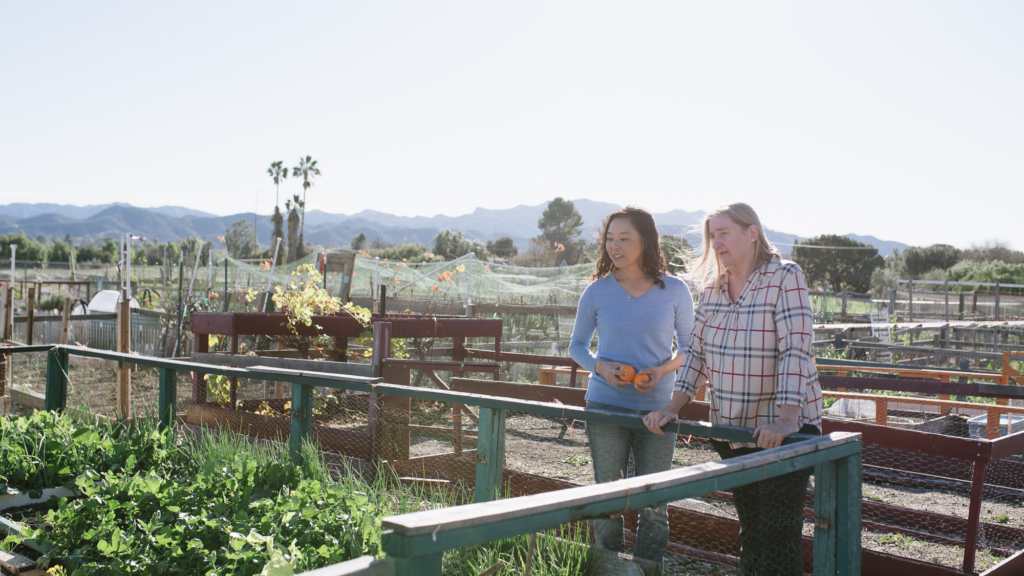
“But every little bit helps—whether it’s garden produce or finding a way to help in your community. What I’m learning is that it takes all of us to move the needle.”
It’s service at its core—and what gives Hansen purpose in her work these days. But ultimately what she saw in the corporate world was companies finding purpose in selling themselves or their products. Her nonprofit work is much different. “It’s not about me or my team necessarily,” says Hansen. “It’s about the people we’re serving. It just creates a very different motivation for what we’re doing, and for me, that’s been huge.”
Sometimes people are paralyzed by the size of the world’s problems—figuring any small move an individual or family can make can’t possibly make a difference. But Hansen will tell you it does. “I think we tend to think: if I can’t change it and fix it, why bother?” she says. “But every little bit helps—whether it’s garden produce or finding a way to help in your community. What I’m learning is that it takes all of us to move the needle.”
This story was originally featured in the Georgetown Business Spring 2023 Magazine.
